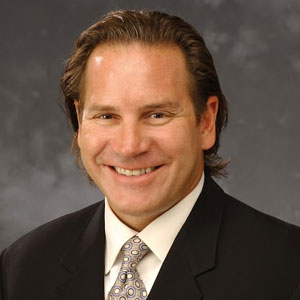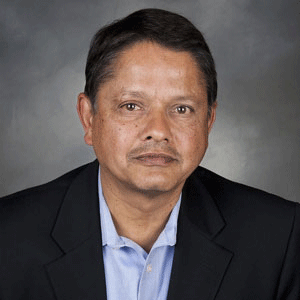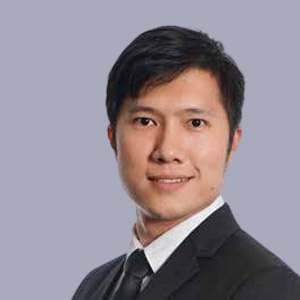THANK YOU FOR SUBSCRIBING

Data Center Evolution
Paul Schultz, VP Data Center, Cloud, and Infrastructure BU, KGP Companies


Paul Schultz, VP Data Center, Cloud, and Infrastructure BU, KGP Companies
A simple web search for “what is a data center” yields a surprisingly interesting history of the evolution of what the term “data center” has come to mean, and where all of us in the business of managing and maintaining data must be prepared to go.
In 2009, a data center was described as: Known as the server farm or the computer room, the data center is where the majority of an enterprise servers and storage are located, operated and managed. There are four primary components to a data center:
White Space: U sable r aised f loor environment or non raised usable space measured in square feet.
Support Infrastructure:
The additional space and equipment required to support data center operations—including power transformers, uninterruptible power source (UPS), generators, computer room air conditioners (CRACs), remote transmission units (RTUs), chillers, air distribution systems, etc.
IT Equipment: Includes the racks, cabling, servers, storage, management systems and network gear required to deliver computing services to the organization.
Operations: The staff assures that the systems (both IT and infrastructure) are properly cand repaired when necessary.
While the categories contained in the definition of a data center may remain applicable today, their contents—and their impact—have changed dramatically.
A recently published definition of data center by IT research and advisory firm Gartner provides some insight into the dramatically different view of how the data center has evolved:
The data center is the department in an enterprise that houses and maintains back-end information technology (IT) systems and data stores—its mainframes, servers and databases. In the days of large, centralized IT operations, this department and all the systems resided in one physical place.
"Embracing open architecture that provides exceptional flexibility and compatibility is essential if an organization wants to maximize the utility of the data center elements”
Market and industry trends are changing the way enterprises approach their data center strategy, driving enterprises to look beyond traditional technology infrastructure silos and transform the way they view their data center environment and business processes.
These include aging data center infrastructures that are at risk of not meeting future business requirements, an ongoing cost-consciousness, and the need to be more energy-efficient.
Many enterprises are looking to modernize through virtualization, fabric-based infrastructure, modular designs and public/private or hybrid cloud computing as they explore how best to optimize their resources.
This evolutionary shift , at its heart, is a reflection of the evolution of technology, data utilization, management practices and the organization required to support it all.
Today, the white space for support infrastructure and IT equipment has a far more inclusive definition. What used to be limited to a single (or few) brick-and-mortar locations managed by IT staff on the premises is rapidly being replaced or augmented b y a host of different solutions. The traditional racks and servers have transformed into a variety of form factors, from stationary to mobile, and inclusive of containers, pods, modular spaces and, of course, the cloud. Increasing use of open architecture has only increased the types of devices and data stores that can be included in the data center, further expanding the definition of the term and the practical impact upon the organization. Data centers for large enterprises now include a widely dispersed network of different components, not just what was traditionally considered data centers, but also all of the Central Offices, edge devices and applications that reside on its network.
The emergence of Big Data and the exponential growth of the data center has impacted IT departments. While the main concerns of IT professionals used to be centered in the areas of equipment speed, capacity and reliability, the issues of this era have a far broader focus and wider range of responsibilities.
The inclusion of a rapidly expanding definition of an enterprise’s data center, has been a driver of this expanded focus, and has given rise to a host of new issues demanding attention: How are all of these dispersed network elements monitored and maintained through a single platform? What functions in my network will be virtualized first? How do I migrate my customers from old to new with out impact? Can older equipment coexist with the new equipment? What components must be retired and when to save on power and real-estate expenses? How does the organization effectively control what enters and leaves the network, and how can oversight of usage and data traffic be accomplished? What remains in our own cloud versus leveraging a more hybrid model? In a dispersed enterprise where there is no single centralized physical data center, how can maintenance and quality be accomplished in a sustainable, cost-effective manner?
The answers to these questions will certainly differ from organization to organization, but to get to an appropriate answer, each enterprise will be required to develop a detailed and forward-looking strategic plan that considers the hard costs, soft costs and unintended consequences of each decision.
Examples
• Embracing open architecture that provides exceptional flexibility and compatibility is essential if an organization wants to maximize the utility of the data center elements it currently possesses as well as prepare itself for the future. The potentially unintended consequence is the huge expansion of devices that can join the network and the resources required to run, control and maintain them.
• A dispersed IT department that has a broad base of skills and knowledge to address hardware and software issues. While essential, these capabilities do not necessarily need to be employees. The effectiveness of outsourced IT support has become remarkable. They are often highly trained, far more experienced in multiple different architectures and environments, have far more diverse troubleshooting exposure, and are forced to be completely current on technologies and equipment to remain relevant, and bring fresh industry lessons learned and expierince to your IT department.
A strategic plan that addresses the benefits, consequences and downstream costs of each of these data center decisions will serve the IT department and the larger organization very well. It has also become an essential component of sound business practices as more and more C-Suite titles and roles associated with IT and data management have become commonplace.
Weekly Brief
I agree We use cookies on this website to enhance your user experience. By clicking any link on this page you are giving your consent for us to set cookies. More info
Read Also
Advancing Retail through E-Commerce, Cloud and Cyber security
From Code To Impact: Leading Enterprise Ai With Purpose
Reimagining Pension Services Through Responsible Innovation
Maritime: Beyond Systems, Beyond Seas
Human-Centered Innovation in the GenAI Era
The Art and Science of Selling
Responsible Data Leadership in an AI-Driven World
Driving Guest-Centric IT Innovation in Integrated Resorts





















